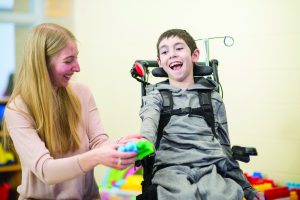 Let Us Help You
Let Us Help You
Grow Professionally!
EDUCATION RESOURCES is committed to ensuring class participants learn effective techniques and critical problem solving skills that can be immediately applied to the work setting.
Improve Outcomes by Improving Patient Care
PLEASE CLICK HERE FOR NEWLY ADDED DATES IN 2019
Please click on the links below for full course information, dates, venues, CEU information and registration details.
Baby Steps: Building Ambulation Interventions for the Infants and Young Children with Posture and Movement Dysfunction
Jan McElroy
July 27-29, 2018 – Plano, TX
Practical Strategies for Treating Complex Pediatric Feeding Disorders: Treating the Whole Child
Mary Tarbell Bickley
July 27-28, 2018 – Temple, TX
November 3-4, 2018 – Stafford, TX
Maximizing Cardiovascular and Pulmonary Function in Patients to Decrease Re-Admissions and Reach Optimal Outcomes: If you Can’t Breathe Nothing Else Matters
Donna Frownfelter
August 10-11, 2018 – Denison, TX
Treating Infants and Families in the NICU and Beyond
Roberta Gatlin
August 24-25, 2018 – Pasadena, TX
Postural Control for UE and LE Function: NDT Approach, Motor Learning, Evidence Based Practice
Monica Diamond
September 22-23, 2018 – Dallas, TX
Effectively Treat Behavior in Children: Traumatic Brain Injury, Autism Spectrum Disorder, Sensory Processing, Cognitive Limitations, PTSD, & Other Challenges
John Pagano
September 22-23, 2018 – Houston, TX
NEW
Baby Beats and Breaths: Therapeutic Interventions for the Premature Infant with Cardiopulmonary Compromise
Holly Schifsky
September 29-30, 2018 – Houston, TX
Assessment and Treatment of Children with Oral Motor, Feeding/Swallowing and Respiratory Function Challenges: Children with Neuromuscular Involvement
Rona Alexander
October 5-8, 2018 – Houston, TX
NEW
Myofascial Release and Its Application to Neuro-Developmental Treatment
Gail Ritchie
October 6-7, 2018 – San Antonio, TX
Sensory Integration Intensive
Jeannetta Burpee
November 1-4, 2018 – Houston, TX
Amputee Rehabilitation Across the Continuum of Care using Evidence Based Practice
Inger Bruekner
November 2-3, 2018 – Denison, TX
Critically Thinking Through The Critically Ill
Miki Anderson Haas
November 3-4, 2018 – Dallas, TX
Practical Strategies for Treating Complex Pediatric Feeding Disorders: Treating the Whole Child
Mary Tarbell Bickley
November 3-4, 2018 – Stafford, TX
Functional Strengthening in Children
Maria Fragala Pinkham and Maggie O’Neil
November 16-17, 2018 – Pearland, TX
Education Resources provides courses that remind you why you became a therapist and why you love what you do. Learn skills that you will use right away together with peers who share your passion.
Evidence-based courses for Physical Therapists, Occupational Therapists, Speech Language Pathologists and Assistants from our experts who are leaders in their field, focused on the latest research for knowledge you can apply at work right away.
- Education Resources is a Texas Physical Therapy Association accredited provider for Texas PT CCU’s.
- These Courses meet the approval for type 2 CEUs by the Texas Board of OT Examiners. Education Resources is an approved provider of continuing education by the American Occupational Therapy Association.
- Approved by BOC to offer CEUs for Athletic Trainers.
- Education Resources, Inc. is approved by the Continuing Education Board of the American Speech-Language Hearing Association (ASHA) to provide continuing education activities in speech-language pathology and audiology.
- Application is made to the Commission on Dietetic Registration for appropriate courses.
We Strive to be your Preferred Provider
Search our website for newly added courses
Train Your Staff –
Become a Facility Partner and Bring a Course to Your Facility




